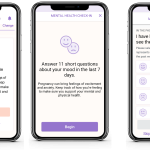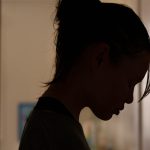Feeling a little stir crazy this winter? You’re not alone, says Dr. Dorothy Sit, assistant professor of Psychiatry at the University of Pittsburgh and researcher at Western Psychiatric Institute and Clinic of UPMC.
Approximately 14 percent of U.S. adults suffer from seasonal mood changes – the “winter blues” – with 6 percent suffering from seasonal affective disorder (SAD). SAD can be related to the shortened length of daylight and the longer periods of darkness we experience in the winter. Also, having a pre-existing risk for depression, plus added stressors from seasonal job loss or holidays, can contribute to a depressed mood.
Fewer men are diagnosed with SAD than women, who make up 60 to 90 percent of SAD patients. SAD sufferers often eat and sleep more, feel unmotivated, suffer from reduced function, and exhibit hibernation-like behaviors such as avoiding the outside or social activities.
Overall, fewer than 1 percent of Americans have SAD. For patients who have bipolar disorder, which is characterized by distinct periods of severe mood swings from mania to depression, as many as 20 percent can suffer from seasonal depression.
“Normally, getting outside for a walk and being active, especially in the mornings when there is increased light, can be a tremendous help in lifting our mood,” said Dr. Sit. “But unfortunately, that’s not always safe to do when the weather is as cold as it is now.”
So what can we do to lift our moods when going outside isn’t an option?
Some suggestions from Dr. Sit include:
- Participate in ANY kind of physical activity – whether it’s doing lunges in your living room in front of the TV, or going for a long walk with friends at the mall, or trying a new exercise class like spinning or yoga. Here in Pittsburgh, she notes, you can try a local tradition of climbing up the Cathedral of Learningsteps for a great workout! But before heading out to strenuous activities like climbing many steps, it is advisable to see your medical doctor first for a check-up and to make sure this kind of activity is safe for you.
- Consider purchasing a light box. While antidepressants and increased exercise may help in some cases, there is an alternative treatment that is proving extremely effective: light therapy. Research has shown that light therapy, by using a light box, can be used not just for SAD, but also for treating non-seasonal mood disorders (major depressive disorder or depression in pregnancy), the effects of jet lag or shift work, and bulimia nervosa. Light boxes should only be used with clinical supervision. Dr. Sit notes that there still are unknowns about the effects of light therapy for bipolar disorder and she is currently conducting studies on light therapy for the treatment of bipolar depression. For more information, Dr. Sit and her study team can be reached at 1-800-436-2461 or 412-246-5346, or by emailing ledererlg@upmc.edu or mcgowanjp@upmc.edu. More information on Dr. Sit’s research is also available here.
- Eat a healthy diet, full of fruits and vegetables. Dr. Sit notes that a healthy diet can help reduce stress and lift our moods.









